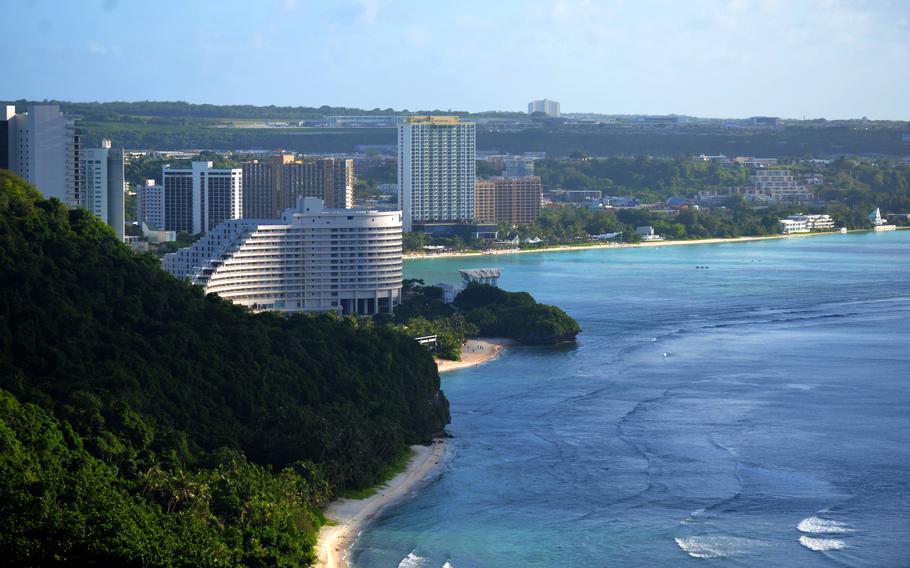
Guam is home to major U.S. military installations, including Naval Base Guam, Andersen Air Force Base and the new Marine Corps Base Camp Blaz. (Alex Wilson/Stars and Stripes)
A proposed missile-defense system for Guam may provide the island with absolute protection from missile threats, including hypersonic missiles, but the project is already overdue, according to missile defense experts.
Guam’s Enhanced Integrated Air and Missile Defense System is expected to deploy in long stages starting in 2027, according to the Missile Defense Agency. But with looming threats from potential adversaries like China and North Korea, that timeline may not suffice, according to Riki Ellison, founder of the Missile Defense Advocacy Alliance.
“We’re not going fast enough,” he told Stars and Stripes by phone Wednesday.
The project, a joint effort between several Defense Department agencies, is described as a “comprehensive, persistent, 360-degree” defense of the U.S. island territory against ballistic, cruise and hypersonic missiles.
Exact figures for the project’s cost haven’t been disclosed, but the Pentagon is requesting $1.5 billion for the “defense of Guam against the missile threat from China” in fiscal year 2024, according to a March 13 DOD news release. The program is expected to incorporate the Army’s Integrated Air and Missile Defense Battle Command System and the Navy’s Aegis Combat System found on Arleigh-Burke class guided-missile destroyers.
Aegis is already capable of intercepting some hypersonic missiles — weapons that travel at Mach 5, or around 1 mile per second – but they can only do so within a relatively small window during a missiles final phase of flight.
The Defense Department is developing a new system — a “glide phase interceptor” — to intercept hypersonic missiles during the longest portion of their flight, a much larger window, but that technology likely won’t be available until the early 2030s, MDA director Vice Adm. Jon Hill said at a March 14 news conference.
This poses a problem, because the United States needs that technology “this decade,” according to Tom Karako, a missile defense analyst at the Center for Strategic and International Studies.
“We don’t get to choose which missiles China uses to hold Guam at risk,” he told Stars and Stripes by phone Tuesday.
Hypersonic missiles can have predictable or maneuverable flight paths, which along with high speed and low altitude trajectories, make them “extremely difficult to detect and counter,” Air Force Gen. Glen VanHerck, head of U.S. Northern Command, told the Senate Armed Forces Subcommittee on Strategic Forces on May 9.
Without a glide phase interceptor, Guam’s defense is limited to “what works today,” Ellison said. Aegis systems, for example, may be deployed on Guam in the near future.
However, Ellison advised against waiting for newer technology rather than investing in proven technology right now.
“It’s really back down to when you think that threat is coming,” he said. “When do you think that China will make moves on Taiwan?”
Guam is home to major military installations, including Naval Base Guam, Andersen Air Force Base and the new Marine Corps Base Camp Blaz. The island has long been called the U.S. military’s “tip of the spear” in the Indo-Pacific, owing to its proximity to the South China Sea, North Korea and China.
Blaz already has some defenses, such as the Terminal High Altitude Area Defense, or THAAD, system, but those capabilities are often supplemented by guided-missile destroyers, Ellison said. Completion of the project may alleviate the need for those destroyers to protect Guam.
“That’s probably the No. 1 driving point of this thing, is to get that done,” Ellison said. “So those ships can do other missions and do what they’re supposed to do.”